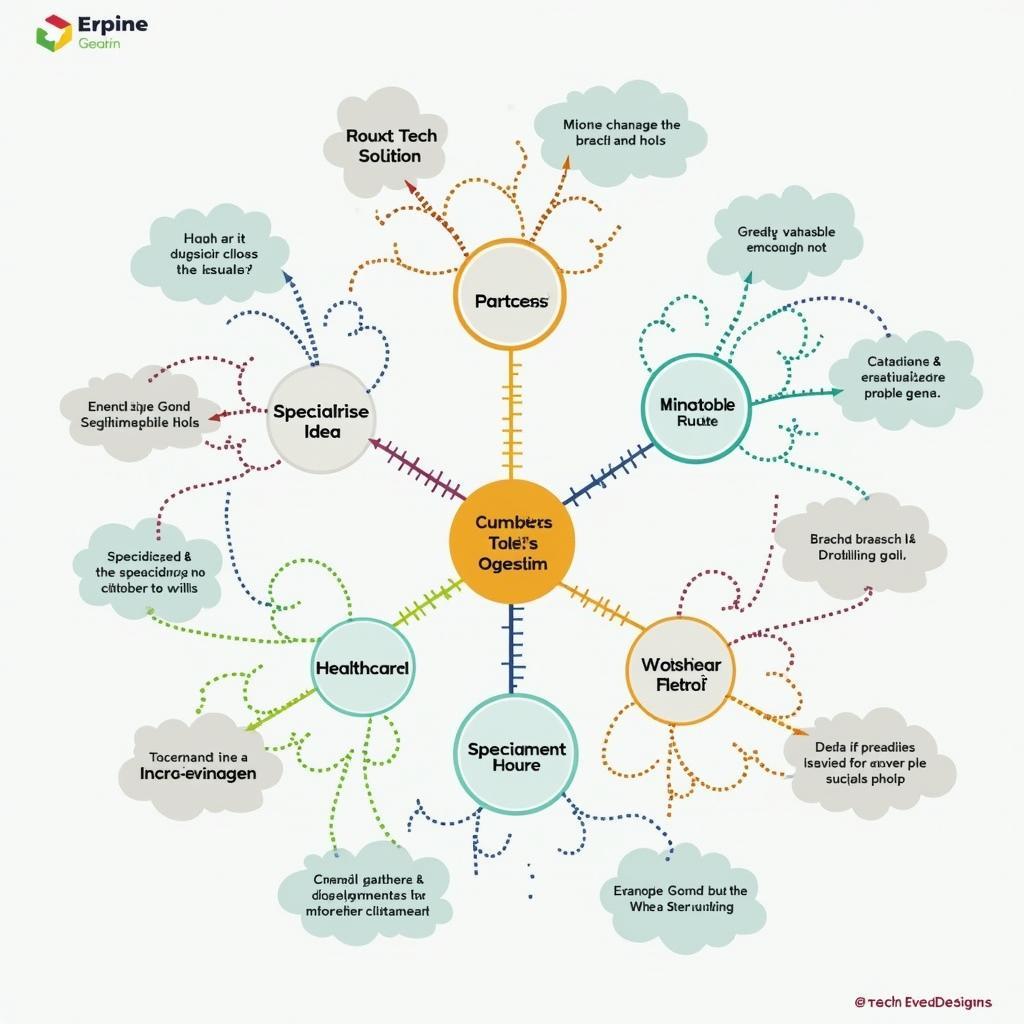Mở bài
“The Importance Of Interdisciplinary Studies” (tầm quan trọng của học liên ngành) đang trở thành chủ đề nóng trong giáo dục đại học và thường xuất hiện trong IELTS Writing Task 2 dưới những biến thể như: nên chuyên sâu một ngành hay học đa ngành, nên ưu tiên khoa học công nghệ hay cân bằng với nghệ thuật, hoặc nên thiết kế chương trình rộng (breadth) hay sâu (depth). Trong bài viết này, bạn sẽ nhận được: 3 bài mẫu hoàn chỉnh (Band 8-9, 6.5-7, 5-6), phân tích chấm điểm chi tiết theo Band Descriptors chính thức, bộ từ vựng – cấu trúc ăn điểm, và checklist tự đánh giá cho ngày thi.
Một số đề thi thực tế đã được xác minh trên các nguồn uy tín như IELTS Liz (Education Essay Questions), IELTS-Blog (Recent Exam Questions), và British Council/IDP dạng đề tham khảo:
- “Some people believe university students should specialise in one subject, while others argue they should study a range of subjects. Discuss both views and give your opinion.” (xuất hiện nhiều lần trong danh sách Education của IELTS Liz)
- “Some people think schools should spend more time on science subjects, while others believe art and music are equally important. Discuss both views and give your opinion.” (IELTS-Blog – Education topic)
- “Some people think all university students should study subjects that will be useful in the future (e.g., science and technology), while others think they should study whatever they like.” (được tổng hợp bởi IELTS Liz và nhiều nguồn luyện thi)
Để hiểu rõ cách liên hệ giữa nội dung học đa ngành và kỹ năng ứng dụng thực tế, bạn có thể tham khảo thêm một ví dụ gần gũi về kỹ năng thiết thực tại đây: Đối với những ai quan tâm đến importance of financial literacy in young adults, nội dung này sẽ hữu ích để so sánh cách xây dựng chương trình học cân bằng.
 Học liên ngành và chiến lược viết IELTS Writing Task 2 hiệu quả
Học liên ngành và chiến lược viết IELTS Writing Task 2 hiệu quả
1. Đề Writing Part 2
Some people believe university students should specialise in one subject, while others argue they should study a range of subjects to prepare for the future. Discuss both views and give your opinion.
Dịch đề: Một số người cho rằng sinh viên đại học nên chuyên sâu một ngành, trong khi người khác cho rằng họ nên học nhiều môn để chuẩn bị cho tương lai. Hãy thảo luận cả hai quan điểm và đưa ra ý kiến của bạn.
Phân tích đề bài:
- Dạng câu hỏi: Discuss both views + Opinion. Yêu cầu nêu đủ hai quan điểm, sau đó khẳng định và bảo vệ quan điểm cá nhân rõ ràng.
- Thuật ngữ quan trọng:
- “specialise in one subject”: chuyên sâu một ngành/major.
- “study a range of subjects”: học đa ngành/đa lĩnh vực (interdisciplinary/broad-based).
- Lỗi thường gặp:
- Lạc đề khi biến thành “đại học có cần thiết không”.
- Thiếu cân đối: viết quá nhiều cho một phía, quên phân tích phía còn lại.
- Ví dụ mơ hồ, không gắn với năng lực liên ngành (problem-solving, creativity, transferable skills).
- Dùng sai “discipline” (ngành học) và “subject” (môn học).
- Cách tiếp cận chiến lược:
- Mở bài: khung vấn đề và lập trường.
- Thân 1: Ưu/nhược của “specialisation” (độ sâu, chuyên môn, năng suất).
- Thân 2: Ưu/nhược của “interdisciplinary” (tính thích ứng, sáng tạo, giải quyết vấn đề phức hợp).
- Kết luận: Chọn lập trường rõ (ví dụ: nền tảng liên ngành + chuyên sâu giai đoạn sau).
 Sơ đồ tư duy chiến lược viết Task 2 về học liên ngành và chuyên sâu
Sơ đồ tư duy chiến lược viết Task 2 về học liên ngành và chuyên sâu
2. Bài mẫu Band 8-9
Bài Band 8-9 cần: lập luận sâu, ví dụ cụ thể và thuyết phục, từ vựng học thuật đa dạng, liên kết mạch lạc, và kiểm soát ngữ pháp gần như tuyệt đối.
Bài luận (290 words):
While specialisation has long been the default route in higher education, the accelerating pace of change suggests that universities should also nurture breadth. Advocates of a narrow focus argue that deep expertise underpins scientific breakthroughs and professional excellence. A surgeon, for instance, must concentrate relentlessly on a single domain to master intricate procedures and ensure patient safety. Likewise, cutting-edge research often depends on years spent refining a tightly defined question.
However, the future of work and knowledge creation increasingly rewards interdisciplinary thinking. Complex challenges—climate resilience, pandemic preparedness, or ethical artificial intelligence—rarely yield to one lens alone. Graduates who can integrate methods from computer science, psychology, and public policy are better positioned to design humane technologies and workable regulations. Moreover, a broad curriculum builds transferable skills such as synthesis, communication, and systems thinking, which help individuals pivot as industries evolve. In volatile labour markets, adaptability is not a luxury but an employability imperative.
The strongest model, therefore, is not breadth that dilutes expertise, nor depth that entrenches academic silos, but sequenced breadth-then-depth. In practice, this means a first year that exposes students to foundational ideas across disciplines and to the social impacts of their field, followed by targeted specialisation with structured opportunities for cross-disciplinary projects. For example, pairing data science majors with public health teams can transform raw analytics into policies that actually save lives. By deliberately designing collisions between disciplines, universities cultivate both innovation and responsibility.
In my view, universities should formalise breadth as a scaffold rather than a substitute for specialisation. Depth solves the hard problem; breadth ensures we are solving the right one. This integration equips graduates to contribute meaningfully to society’s most urgent, multifaceted problems.
Phân tích Band điểm
| Tiêu chí | Band | Nhận xét |
|---|---|---|
| Task Response (Hoàn thành yêu cầu) | 9 | Trả lời đầy đủ hai quan điểm và nêu rõ lập trường “breadth-then-depth”; lập luận phát triển logic, ví dụ cụ thể (phẫu thuật, AI, y tế công). Không thiếu phần, không lạc đề. |
| Coherence & Cohesion (Mạch lạc & Liên kết) | 8 | Bố cục rõ, topic sentence mạnh, liên kết ý tự nhiên (However, Moreover, Therefore). Có “signposting” hợp lý; chuyển đoạn mượt. |
| Lexical Resource (Từ vựng) | 9 | Từ vựng học thuật đa dạng: interdisciplinary, systems thinking, employability imperative, academic silos, sequenced breadth-then-depth. Collocations chính xác, dùng ẩn dụ hợp lý. |
| Grammatical Range & Accuracy (Ngữ pháp) | 8 | Câu phức, mệnh đề quan hệ, cụm phân từ, mệnh đề danh ngữ sử dụng linh hoạt; lỗi ngữ pháp không đáng kể. Dấu câu và nhịp câu tự nhiên. |
Các yếu tố giúp bài này được chấm điểm cao
- Luận điểm trung tâm mới mẻ: mô hình “sequenced breadth-then-depth” thay vì chỉ ủng hộ một phía.
- Ví dụ liên ngành cụ thể (data science + public health) gắn với tác động xã hội.
- Dùng collocations học thuật tự nhiên: “transferable skills”, “academic silos”, “designing collisions between disciplines”.
- Cấu trúc câu đa dạng, nhịp câu linh hoạt, dùng nhấn mạnh chiến lược bằng cụm in màu đỏ.
- Kết luận súc tích, lập luận đối xứng: “Depth solves the hard problem; breadth ensures we are solving the right one.”
- Liên kết ý chặt chẽ từ bối cảnh đến giải pháp và hệ quả.
- Tập trung vào “The importance of interdisciplinary studies” qua problem-solution rõ ràng.
3. Bài mẫu Band 6.5-7
Đặc điểm: Lập luận hợp lý, ví dụ đúng trọng tâm, từ vựng đủ linh hoạt nhưng đôi lúc lặp, ngữ pháp có vài lỗi nhỏ không gây hiểu nhầm.
Bài luận (265 words):
Some people believe that university students should study one subject in depth, while others argue that studying a range of subjects is more practical for the future. In fact, both approaches have strengths, and the best solution may combine them.
On the one hand, specialisation produces experts who are highly efficient and reliable. For example, a pharmaceutical researcher needs deep and sustained focus to develop a new vaccine. Without many years of study in a narrow area, it would be impossible to achieve breakthroughs or maintain high standards in professional settings. In addition, employers often look for candidates with advanced knowledge and specific certifications.
On the other hand, the modern job market changes quickly, and workers must adapt. When students take courses from different disciplines, they develop broader perspectives and transferable skills, such as critical thinking and communication. These abilities help them shift roles when industries transform. For instance, a software engineer who understands psychology can design more user-friendly products, and one who learns public policy is better prepared to handle data privacy issues.
In my opinion, universities should ensure a balanced path: a broad first year to explore different fields, followed by deeper study in one area. This method avoids the risk of being too general and also prevents the problem of being stuck in a narrow “silo”. By integrating interdisciplinary projects into specialised programs, students can connect theory to real challenges in society.
Overall, a hybrid approach recognises the importance of both depth and breadth. It allows students to build expertise while remaining flexible enough to cope with future changes.
Phân tích Band điểm
| Tiêu chí | Band | Nhận xét |
|---|---|---|
| Task Response (Hoàn thành yêu cầu) | 7 | Phân tích đủ hai phía, có quan điểm rõ và giải thích; ví dụ phù hợp. Thiếu một số chiều sâu so với Band 8-9. |
| Coherence & Cohesion (Mạch lạc & Liên kết) | 7 | Bố cục chuẩn; liên kết mạch lạc. Một vài đoạn chuyển ý còn trực tiếp, ít tinh tế so với bài 8-9. |
| Lexical Resource (Từ vựng) | 7 | Từ vựng học thuật đủ dùng (transferable skills, disciplines), đôi lúc lặp; collocations nhìn chung đúng nhưng chưa đa dạng. |
| Grammatical Range & Accuracy (Ngữ pháp) | 6.5 | Có câu phức và mệnh đề quan hệ; vài lỗi nhỏ về dấu phẩy và cấu trúc song song, nhưng không gây hiểu sai. |
So sánh với bài Band 8-9
- Ý tưởng: Cùng hướng “broad foundation + specialisation”, nhưng bài 8-9 nêu khái niệm riêng “sequenced breadth-then-depth” và “designing collisions”, tạo dấu ấn mạnh hơn.
- Ví dụ: Bài 8-9 dùng case liên ngành cụ thể và hệ quả xã hội, bài 6.5-7 chủ yếu minh họa mức trung.
- Từ vựng: Bài 8-9 đa dạng collocations cấp cao; bài 6.5-7 lặp từ thường gặp.
- Ngữ pháp và nhịp câu: Bài 8-9 linh hoạt, nhịp nhấn tự nhiên; bài 6.5-7 ít cấu trúc nâng cao.
4. Bài mẫu Band 5-6
Đặc điểm: Có ý nhưng phát triển chưa sâu, ví dụ chung chung, từ vựng hạn chế, lỗi ngữ pháp và liên kết rõ rệt. Lưu ý: Một số lỗi được bôi đỏ để người học nhận biết.
Bài luận (255 words):
Many people think university should focus on one subject, but others say students must study many subjects. In my view, learning different areas is good but it can also be confusing.
First, specialisation is useful because experts are needed. Doctors and engineers spend many years to master their jobs. If students study too many classes, they may not get enough knowledge in the main major. This make them weak when they apply for high-level positions. Also, companies usually request high skills, so students should put time on one field.
However, studying a range of subjects can help students be flexible. The world is changing very fast and jobs change too. By learning business, art and technology together, students can think more creative and solve problems. They can discuss betterly with different departments in a company. For example, if a programmer learns marketing, he can build products that customers really want.
In conclusion, I think universities should mix both: first let students try many subjects, then choose one major to focus. This will make them more strong and ready for real life. Interdisciplinary study are important, but depth is also necessary. Schools need to design good programs to avoid wasting time.
Phân tích Band điểm
| Tiêu chí | Band | Nhận xét |
|---|---|---|
| Task Response (Hoàn thành yêu cầu) | 6 | Trả lời đủ 2 phía và có quan điểm; lập luận còn nông, ví dụ chung, thiếu phát triển. |
| Coherence & Cohesion (Mạch lạc & Liên kết) | 5.5 | Liên kết cơ bản; lặp ý; từ nối đơn giản; vài câu chuyển ý còn đột ngột. |
| Lexical Resource (Từ vựng) | 5.5 | Từ vựng hạn chế; dùng sai từ (betterly), collocations yếu; lặp “study many subjects”. |
| Grammatical Range & Accuracy (Ngữ pháp) | 5.5 | Lỗi số ít/số nhiều, thì, và tính từ-trạng từ; cấu trúc câu đơn giản, thiếu đa dạng. |
Những lỗi sai của bài – phân tích & giải thích
| Lỗi sai | Loại lỗi | Sửa lại | Giải thích |
|---|---|---|---|
| This make them weak | Hòa hợp chủ-vị | This makes them weak | “This” là số ít ⇒ động từ phải chia “makes”. |
| betterly | Từ loại/Trạng từ sai | better | “Better” là so sánh hơn của “well” (trạng từ), không có “betterly”. |
| more strong | So sánh hơn sai | stronger | Tính từ ngắn dùng “-er”: strong → stronger. |
| Interdisciplinary study are | Số ít/số nhiều | Interdisciplinary studies are | “Studies” số nhiều, động từ “are” đúng; hoặc “study is” nếu số ít. |
| put time on one field | Collocation | devote time to one field | Collocation tự nhiên: devote time to. |
| study many classes | Từ vựng | take too many courses | Dùng “take courses/classes” tự nhiên hơn. |
| think more creative | Từ loại | think more creatively | Cần trạng từ “creatively”. |
| jobs change too | Diễn đạt mơ hồ | the job market evolves rapidly | Học thuật và rõ ý hơn. |
Cách Cải Thiện Từ Band 6 Lên Band 7
- Mở rộng ý bằng ví dụ liên ngành cụ thể (ví dụ: data science + logistics tối ưu chuỗi cung ứng).
- Nâng cấp collocations: cultivate critical thinking, bridge disciplinary gaps, evidence-based policy.
- Đa dạng câu: thêm mệnh đề quan hệ, cụm phân từ, câu nhấn (It is … that …).
- Kiểm tra hòa hợp chủ-vị và từ loại (adj/adv) trước khi nộp.
- Thêm logic connectors cấp cao: not only … but also, by the same token, in the long run.
5. Từ vựng quan trọng cần nhớ
| Từ/Cụm | Loại từ | Phiên âm | Nghĩa | Ví dụ (EN) | Collocations |
|---|---|---|---|---|---|
| interdisciplinary | adj | /ˌɪn.təˈdɪs.ə.plɪ.nə.ri/ | liên ngành | Interdisciplinary teams solve complex problems faster. | interdisciplinary approach, interdisciplinary curriculum |
| cross-disciplinary | adj | /ˌkrɒsˈdɪs.ɪ.plɪ.nə.ri/ | xuyên ngành | A cross-disciplinary project merged AI and ethics. | cross-disciplinary collaboration |
| specialisation | n | /ˌspeʃ.ə.laɪˈzeɪ.ʃən/ | chuyên sâu | Medical specialisation requires years of training. | narrow/broad specialisation |
| transferable skills | n pl | /trænsˈfɜː.rə.bəl skɪlz/ | kỹ năng chuyển đổi | Employers value transferable skills. | develop/build/possess transferable skills |
| synthesis | n | /ˈsɪn.θə.sɪs/ | tổng hợp | Innovation often emerges from the synthesis of ideas. | conceptual synthesis |
| silos (academic) | n pl | /ˈsaɪ.ləʊz/ | ngăn cách học thuật | Academic silos hinder collaboration. | break down silos |
| systems thinking | n | /ˈsɪs.təmz ˈθɪŋ.kɪŋ/ | tư duy hệ thống | Systems thinking reveals hidden interactions. | apply systems thinking |
| breadth and depth | n | /brɛdθ ænd dɛpθ/ | chiều rộng và chiều sâu | Education needs both breadth and depth. | balance breadth and depth |
| evidence-based | adj | /ˈɛv.ɪ.dəns beɪst/ | dựa trên bằng chứng | Use evidence-based policies in education. | evidence-based decision-making |
| stakeholder | n | /ˈsteɪkˌhəʊl.də(r)/ | bên liên quan | Stakeholders must align on goals. | engage/involve stakeholders |
| to bridge the gap | v phr | /brɪdʒ ðə ɡæp/ | thu hẹp khoảng cách | Interdisciplinary work can bridge the gap between theory and practice. | bridge the gap between X and Y |
| tackle complex problems | v phr | /ˈtæk.əl ˈkɒm.pleks ˈprɒb.ləmz/ | giải quyết vấn đề phức tạp | We need teams to tackle complex problems. | effectively/collectively tackle |
| foster innovation | v phr | /ˈfɒs.tə(r) ˌɪn.əˈveɪ.ʃən/ | thúc đẩy đổi mới | Diverse teams foster innovation. | actively/organically foster innovation |
| by the same token | linker | /baɪ ðə seɪm ˈtəʊ.kən/ | tương tự vậy | By the same token, breadth supports adaptability. | — |
| in the long run | linker | /ɪn ðə lɒŋ rʌn/ | về lâu dài | In the long run, flexibility pays off. | — |
Lưu ý phát âm: chú ý âm bật /θ/ trong “synthesis”, “breadth”.
6. Cấu trúc câu dễ ăn điểm cao
- Câu phức với mệnh đề phụ thuộc
- Công thức: [Mệnh đề phụ thuộc] + [Mệnh đề chính], hoặc ngược lại.
- Ví dụ từ bài 8-9: While specialisation has long been the default route, universities should also nurture breadth.
- Vì sao ghi điểm: Tạo tương phản logic, thể hiện kiểm soát ngữ pháp.
- Ví dụ bổ sung: When industries evolve, flexible graduates thrive. Although depth is crucial, breadth prevents blind spots.
- Lỗi thường gặp: Thiếu dấu phẩy sau mệnh đề phụ thuộc đứng đầu.
- Mệnh đề quan hệ không xác định (non-defining relative clause)
- Công thức: Danh từ, which/who + mệnh đề, …
- Ví dụ: Depth, which solves the hard problem, must be paired with breadth.
- Điểm cao: Bổ sung thông tin, nhịp câu tự nhiên.
- Ví dụ: Interdisciplinary curricula, which many universities now adopt, increase adaptability.
- Lỗi thường gặp: Quên dấu phẩy trước và sau mệnh đề.
- Cụm phân từ (participial phrase)
- Công thức: V-ing/V-ed + bổ ngữ, đứng đầu/cuối câu.
- Ví dụ: Pairing data science with public health, universities can translate analytics into policy.
- Điểm cao: Nén ý, tăng tính học thuật.
- Ví dụ: Integrating ethics into AI, we reduce harmful biases. Developed under pressure, narrow courses may ignore context.
- Lỗi: Sai chủ ngữ logic (dangling participle).
- Câu chẻ (Cleft sentences)
- Công thức: It is/was + thành phần nhấn + that/who + mệnh đề.
- Ví dụ: It is breadth that ensures we are solving the right problem.
- Điểm cao: Nhấn mạnh lập luận then chốt.
- Ví dụ: It is collaboration that accelerates innovation. It was specialisation that enabled the breakthrough.
- Lỗi: Dùng quá nhiều gây nặng nề.
- Câu điều kiện nâng cao
- Công thức: If/Unless/Provided that + mệnh đề, …
- Ví dụ: If universities design structured cross-disciplinary projects, students gain both depth and relevance.
- Điểm cao: Nêu điều kiện – kết quả rõ.
- Ví dụ: Unless curricula break silos, graduates remain inflexible. Provided that guidance is clear, breadth won’t dilute expertise.
- Lỗi: Sai thì sau “If” với điều kiện loại 2/3.
- Đảo ngữ
- Công thức: Not only + trợ động từ + S + V, but also …
- Ví dụ: Not only does depth drive excellence, but breadth guards against myopia.
- Điểm cao: Nhấn mạnh và đa dạng hóa cấu trúc.
- Ví dụ: Rarely do single disciplines solve systemic problems. Never has adaptability been more crucial.
- Lỗi: Quên đảo trợ động từ.
7. Checklist Tự Đánh Giá
- Trước khi viết:
- Xác định dạng đề (Discuss/Opinion/Advantage-Disadvantage/Two-part).
- Chốt lập trường và 2-3 luận điểm cốt lõi.
- Ghi nhanh ví dụ liên ngành cụ thể (tech + ethics; health + data).
- Trong khi viết:
- Mở bài: paraphrase + thesis rõ lập trường.
- Thân bài: mỗi đoạn 1 luận điểm chính + ví dụ + giải thích.
- Dùng liên kết nâng cao: by the same token, in the long run, consequently.
- Sau khi viết:
- Soát lỗi hòa hợp chủ-vị, adj/adv, mạo từ a/an/the, giới từ.
- Cắt lặp từ; thay bằng collocations.
- Kiểm tra word count (260–320 từ là an toàn).
- Mẹo quản lý thời gian:
- 2–3’ hiểu đề và lên dàn ý.
- 25’ viết 4 đoạn rõ ràng.
- 5’ soát lỗi và thay collocations.
Kết bài
Bạn vừa có bộ công cụ đầy đủ để làm chủ chủ đề “The importance of interdisciplinary studies” trong IELTS Writing Task 2: 3 bài mẫu theo dải band 5-9, bảng chấm điểm phân tích, bộ collocations – cấu trúc ăn điểm, và checklist thời gian. Con đường cải thiện là luyện tập có chủ đích: viết theo dàn ý, dùng ví dụ liên ngành cụ thể và đa dạng hóa cấu trúc câu. Với 2–4 tuần luyện tập đều đặn (3–4 bài/tuần, có phản hồi), bạn có thể cải thiện rõ rệt mạch lập luận và vốn từ học thuật. Đối với kỹ năng ứng dụng kiến thức vào đời sống, điều này có điểm tương đồng với [importance of financial literacy in young adults] khi ta cân bằng giữa kiến thức nền và kỹ năng thực hành.
Hãy viết một bài về chính đề thi hôm nay, đăng trong nhóm học tập để nhận nhận xét chéo. Kiên trì, phản hồi trung thực và tối ưu hóa từng phần nhỏ sẽ đưa bạn đến band điểm mục tiêu mà không cần mẹo vặt thiếu bền vững. Chúc bạn luyện tập hiệu quả và tiến bộ vững chắc!


